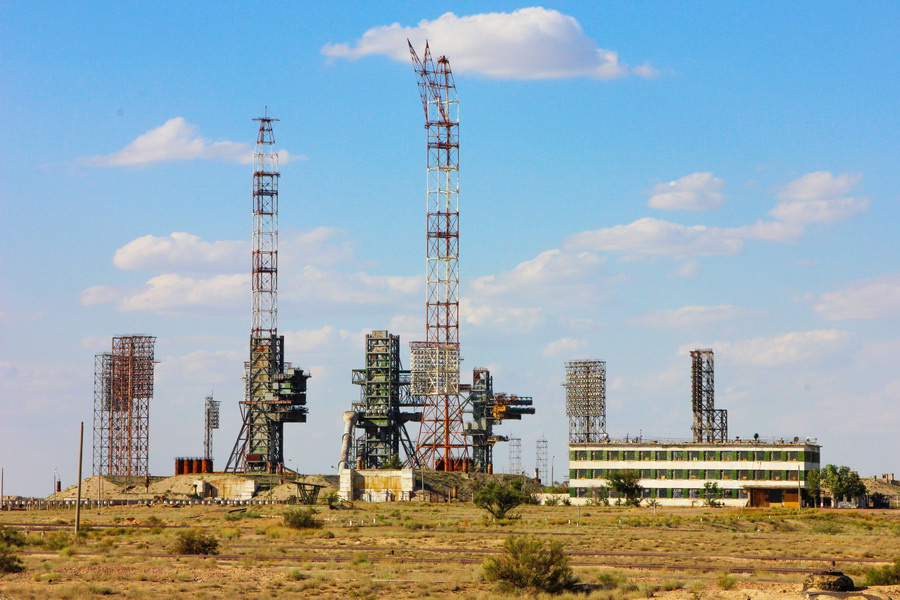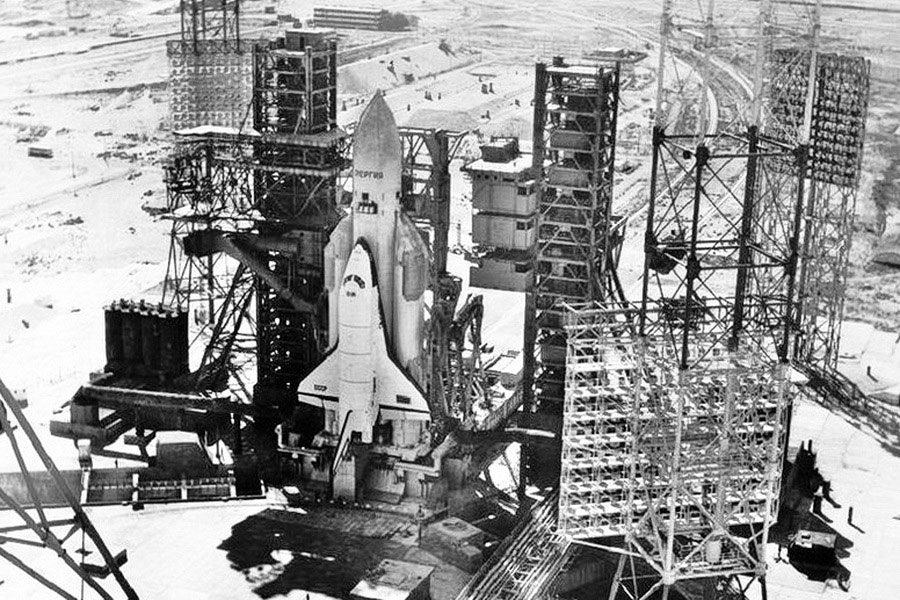Site 110, Baikonur Cosmodrome

The Baikonur Cosmodrome boasts over 20 launch pads. Some have seen service for over fifty years and have facilitated the launch of hundreds of rockets, while others were constructed for specific projects, not all of which were successful. Launch pad 110 stands out as one of Baikonur's unique installations and perhaps one of its most ill-fated, having been the site of only five launches, with just the final one proving successful.
The space race between the USSR and the United States escalated during the 1960s. Following the first manned space flight, the first female astronaut in space, and the first spacewalk, the competition shifted towards landing the first man on the moon. Both superpowers aimed to showcase their technological dominance, but such an ambitious objective demanded tremendous resources and a new super-heavy rocket. The U.S. embarked on the development of the future Saturn-5 rocket, while the USSR initiated the N-1 project.
Launch pad 110 was established at the Baikonur Cosmodrome specifically for the launch of the N-1 rocket. Construction began in 1964, and the inaugural launch took place on February 21, 1969, a mere five months prior to the successful Apollo 11 mission.
The first N-1 rocket launch from pad 110 ended in disaster. Technical issues arose within the initial seconds of flight, causing the rocket to explode at an altitude of 12 km, just 68 seconds into the flight. The second launch, on July 3, 1969, proved catastrophic: the rocket barely reached 200 meters altitude before it plummeted onto the launch pad, causing massive damage. Although there were two launch pads at the site, no further launches were attempted from the damaged one.
It was not until two years later, on June 27, 1971, that the third N-1 launch took place. Despite numerous checks and modifications, the launch was equally disastrous. Problems arose from the onset, and within less than a minute, the rocket plummeted 16 km from the launch pad, leaving a 45-meter-diameter crater in its wake. By this point, the U.S.'s Apollo program had already successfully completed three moon missions.
The fourth and final launch of the rocket took place on November 23, 1972. The rocket managed to ascend to an altitude of 40 km before exploding at the 107th second. Despite many modifications to this version of the rocket, the persistent issue of vibrations in the hull and engines could not be eliminated.
With the realization that the space race had been lost, work on the rocket ceased definitively in 1974. However, the project itself was not formally closed, and there were still plans for five more launches with a view towards establishing a lunar base. Launch pad 110 lay dormant for over a decade, only being reutilized for Soviet space endeavors in 1987.
Two years after the N-1 project was discontinued, in 1976, the Buran-Energia program was launched, mirroring the American Space Shuttle project. After extensive development, the Energia rocket was created, capable of transporting over 100 tons of payload into orbit. The rocket was so colossal that it had to be transported to the launch pad from the assembly shop via two parallel railroad tracks.

The final launch from pad 110 occurred on November 15, 1988. The Energia launch vehicle propelled the unmanned space shuttle Buran into space. The spacecraft automatically completed two orbits around the Earth and successfully touched down at the Yubileyny airfield, situated in the northern section of the Baikonur Cosmodrome. This marked the only wholly successful launch from pad 110.
Today, pad 110 remains a preserved complex, from which future launches are highly unlikely. While the entrance to the site is closed, it can be observed from a distance during a tour of the Baikonur Cosmodrome.


